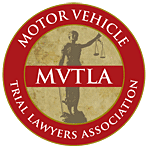A dram shop claim in Connecticut is a suit against a seller of alcohol to an intoxicated person where the purchaser in consequence of intoxication injures a third parties property or causes personal injury. The specific dram shop statute is Connecticut General Statute 30 - 102. The Connecticut legislature has by statute capped the exposure of a restaurant, bar or liquor establishment at $250,000.00. Dram shop claims also require a specific notice within 120 days of the occurrence specifying the time, date, who the alcohol was sold to, the name and address of the injured party and the time, date and place where the injury occurred. In the case of death or incapacity, the notice time period is 180 days from the occurrence. The Rotatori Law Firm usually has a Connecticut State Marshal serve the notice on the liquor bar and/or restaurant.
Dram shop claims may appear in conjunction with motor vehicle "DUI" negligence claims, wrongful death vehicular claims, premises liability claims and battery claims flowing from the typical "bar fight". In Connecticut, the Connecticut Supreme Court under John O'Dell Administrator v Kenneth Kozee, 307 Conn. 231, 53 A. 3d 178 (2012) requires that the plaintiff prove that the intoxicated person be "visibly intoxicated" to the seller of alcohol. The Connecticut Supreme Court dissent, however, strongly opposed a standard of proof requiring visible intoxication because the statute itself does not specifically require visible intoxication. The statutory prohibition upon sales of intoxicating liquor to persons already intoxicated applies if the intoxication is observable in the appearance or behavior of the person to
whom the intoxicating liquor is furnished. It is not enough for the plaintiff to prove that the purchaser of alcohol was only "under the influence". However, the plaintiff does not have to prove that the intoxication was "obvious" to the liquor establishment.
The question then becomes how does the supplier of liquor discover that the prospective purchaser is intoxicated? The answer to this question is by making reasonable active observation of the purchaser's appearance, speech, breath, physical appearance and conduct when serving alcohol. The trial proof for the plaintiff to establish dram shop liability requires that the plaintiff prove that the purchaser's intoxication could have been observed by the alcohol seller. In a typical DUI car accident, this proof can be made by admissions by the DUI motor vehicle accident defendant that he was drunk when served, witnesses observations at the restaurant and bar, whether the bar patron had anything to eat at the bar while drinking, the height and weight of the patron, the type of alcohol consumed by the bar customer, the time line for drinking, the time line of the subsequent accident, the blood alcohol content or "BAC" test results , whether the patron flunked law enforcement field sobriety tests post-accident, drinking admissions by the bar patron to an investigating police officer, the severity of the crash, the outrageous behavior that resulted in a crash, and whether the motor vehicle operator-bar patron had a complete loss of memory or "black out" after leaving the restaurant and/or bar.
Peter Rotatori, III of The Rotatori Law Firm will consider bringing a dram shop claim for a plaintiff where specific facts in a case support a winnable dram shop case.





